CTBT in focus: Australia, New Zealand and the South Pacific
The international system of listening, feeling and sniffing the Earth for any sign of a nuclear explosion is run by the Comprehensive Nuclear-Test-Ban Treaty Organization (CTBTO).

Infrasound station IS03 at Davis Base, Antarctica
“Today we mark a milestone with the completion of the Australian segment of the International Monitoring System. But I look forward to an even greater milestone, the entry into force of the CTBT,”
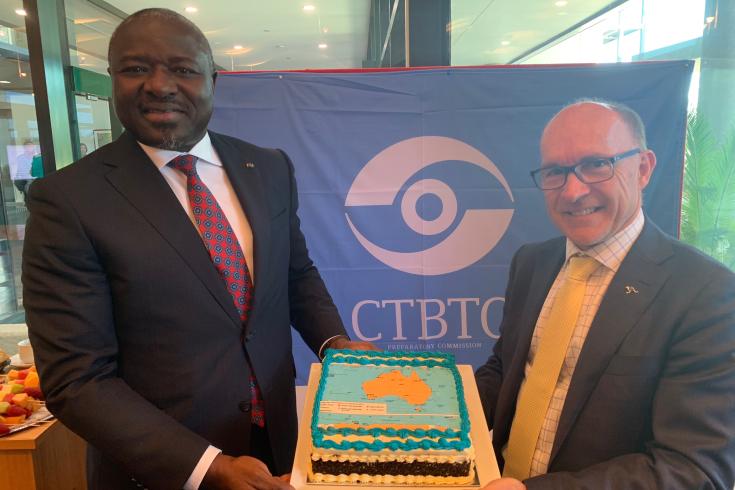
ES Zerbo with Rob Floyd, Director General - Australian Safeguards and Non-proliferation Office.
“The monitoring stations in Australia cover a large expanse of the Southern hemisphere. They are strategically positioned to significantly contribute to the International Monitoring System detection and location capability,”
“Real-time data from the seismic stations of the Treaty monitoring system are used by the National Earthquake Alerts Centre at Geoscience Australia to detect earthquakes, 24 hours a day, seven days a week,” Johnson said.
“The Treaty monitoring system assists Geoscience Australia …to detect potentially tsunami-causing earthquakes in the Indian, Pacific and Southern oceans,”
During his visit to Australia from 19-21 November 2018, Zerbo met with high-level officials in Canberra, including Acting Secretary for Foreign Affairs, Tony Sheehan, where they discussed various approaches to forward entry into force of the Treaty.
The Executive Secretary delivered the 2018 John Gee Memorial Lecture at the Australian National University, with opening remarks from ANU Chancellor and Former Foreign Minister Gareth Evans. The lecture focused on preserving and promoting multilateralism to address 21st century challenges.
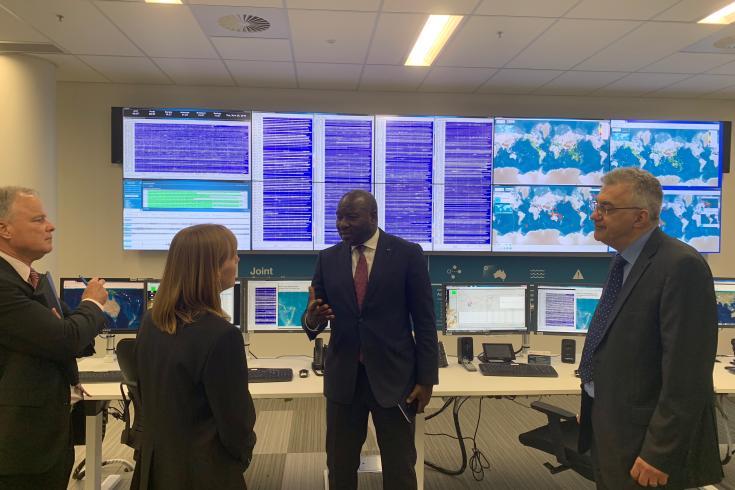
Operations Center, Geoscience Australia
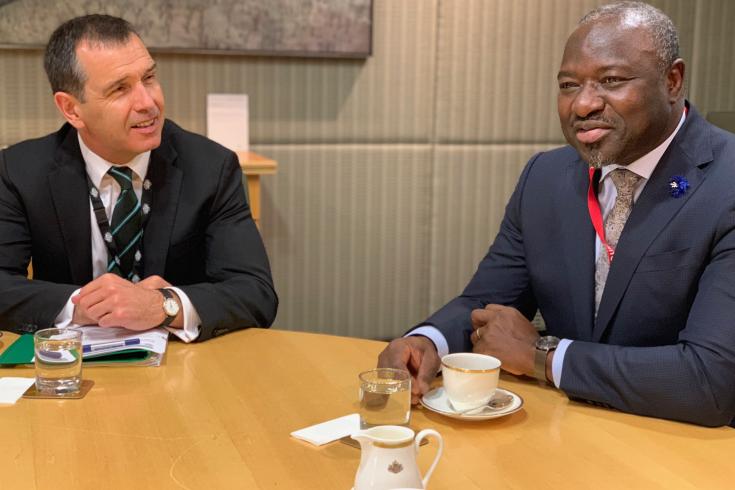
DFAT Acting Secretary, Tony Sheehan, with ES Zerbo

Former Australian Foreign Minister Gareth Evans with ES Zerbo
Ambassadors and technical experts from eight South Pacific countries came together in Melbourne on 21 November 2018 to attend a CTBTO workshop, hosted at the Australian Radiation Protection and Nuclear Safety Agency (ARPANSA) on the Comprehensive Nuclear-Test-Ban Treaty. The workshop focused on enhancing knowledge of the political and technical aspects of the CTBT and its verification system, and the use of its nuclear monitoring technologies and data for civil and scientific applications.
The use of CTBT data to advance science and safety, especially for Tsunami warning, was particularly important in the region, the workshop heard.
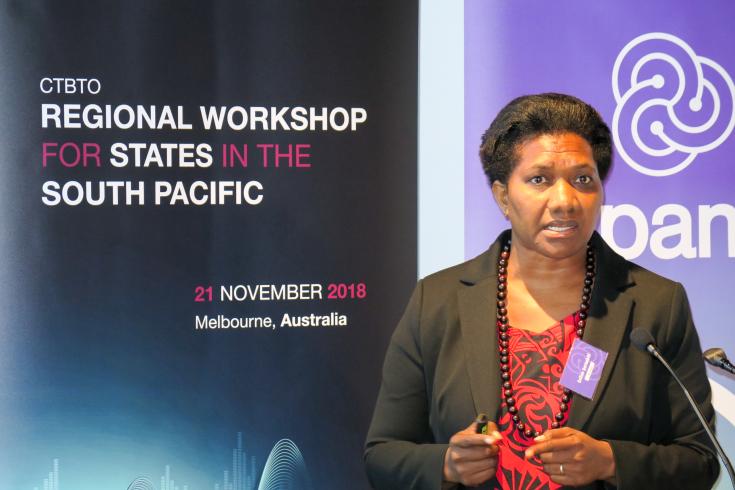
Esline Garaebiti, Geo-Hazard Manager, Vanuatu
“The CTBT gives everyone a whistle. All data from the global monitoring network are available for all State Signatures,”
Executive Secretary visit to New Zealand
During his visit to New Zealand from 22-23 November 2018, Zerbo met with high-level officials and scientific experts in Wellington and Christchurch. This included talks with New Zealand Ambassador for Disarmament, Dell Higgie, and Bernadette Cavanagh, Deputy Secretary Multilateral and Legal Affairs, Ministry of Foreign Affairs and Trade, on their common pursuit of the CTBT’s entry into force and a world free from nuclear weapons. He held discussions with two of New Zealand’s Crown Research Institutes – GNS Science and the Institute of Environmental Science and Research, both who operate IMS facilities, on their fundamental science objectives and the role that they can play in collaboration with the CTBTO in strengthening capacity in the Southwest Pacific.

Discussions with NZ MFAT
In an interview with Radio New Zealand “Nine to Noon” host, Kathryn Ryan, Zerbo spoke about nuclear testing and developments on the Korean Peninsula and elsewhere.
The Executive Secretary delivered a public address at New Zealand Institute of International Affairs in Wellington, with opening remarks from former Governor General of New Zealand Sir Anad Satyanand. The lecture focused on advancing nuclear disarmament through the CTBT: a verifiable and enforceable prohibition on nuclear testing, 60 years in the making.
While in Christchurch, he toured the “Red Zone”, an area of the city centre that had been cordoned off following the February 2011 earthquake that caused widespread damage across Christchurch.
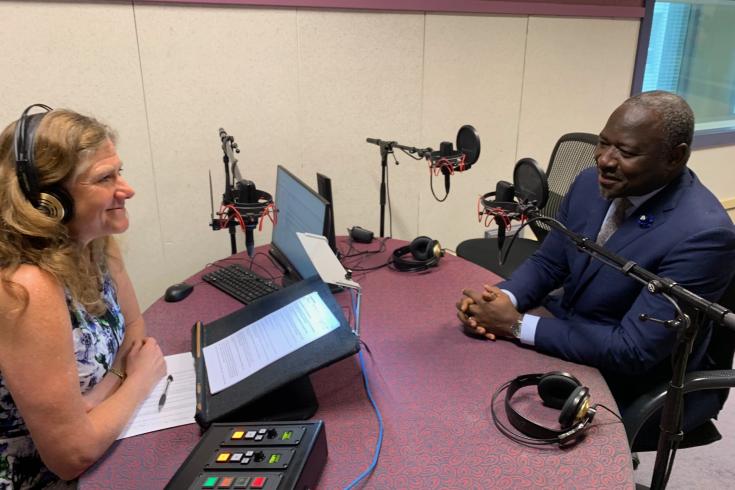
Interview with Radio New Zealand
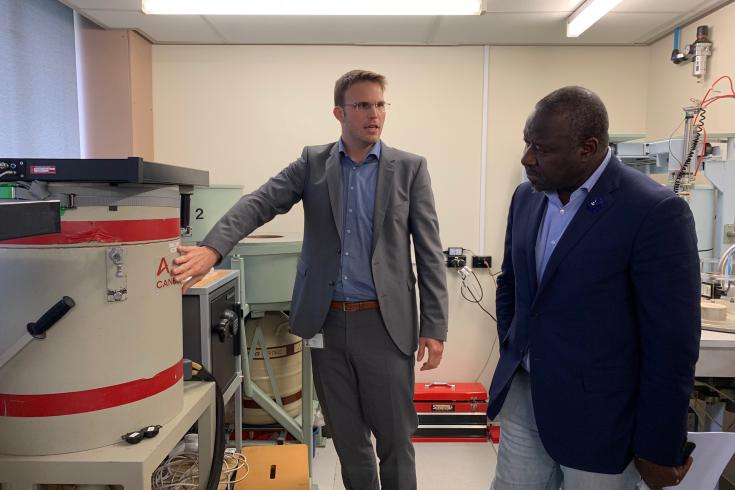
29 Nov 2018